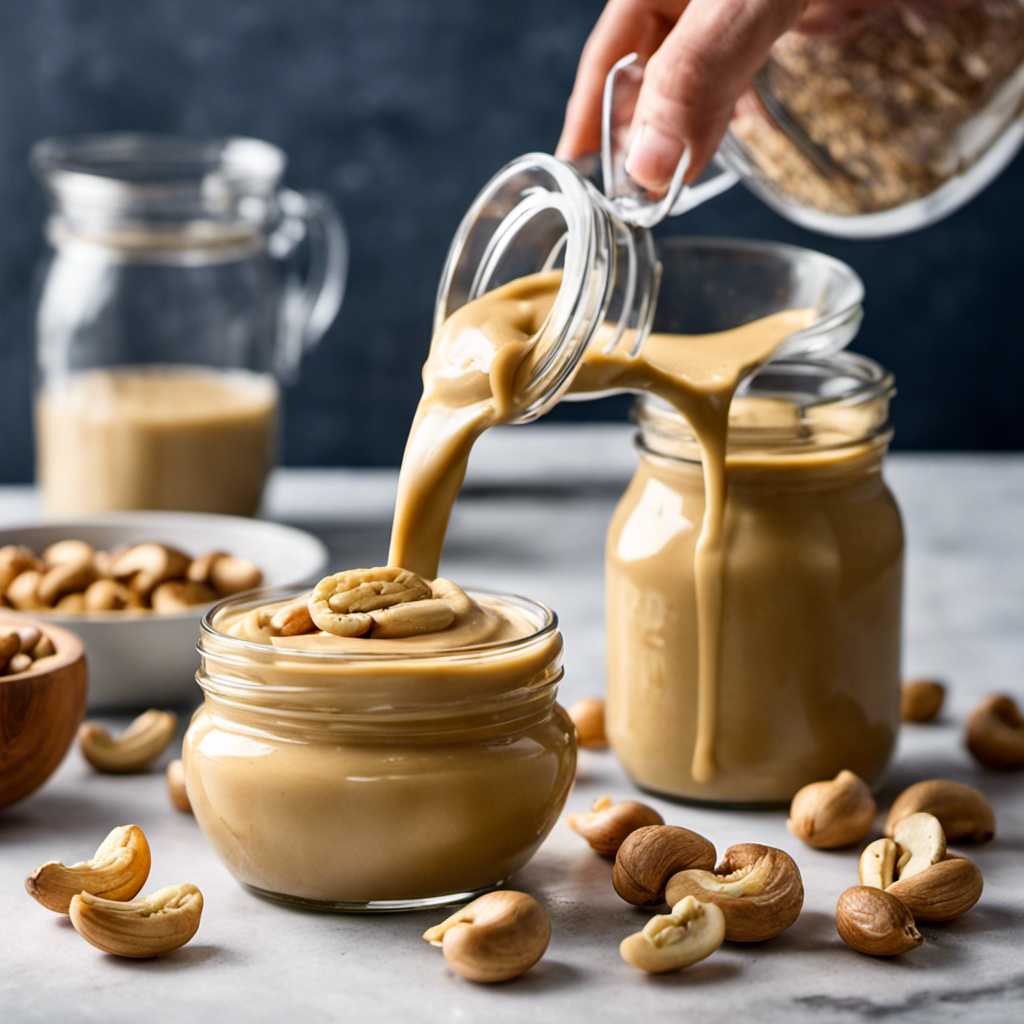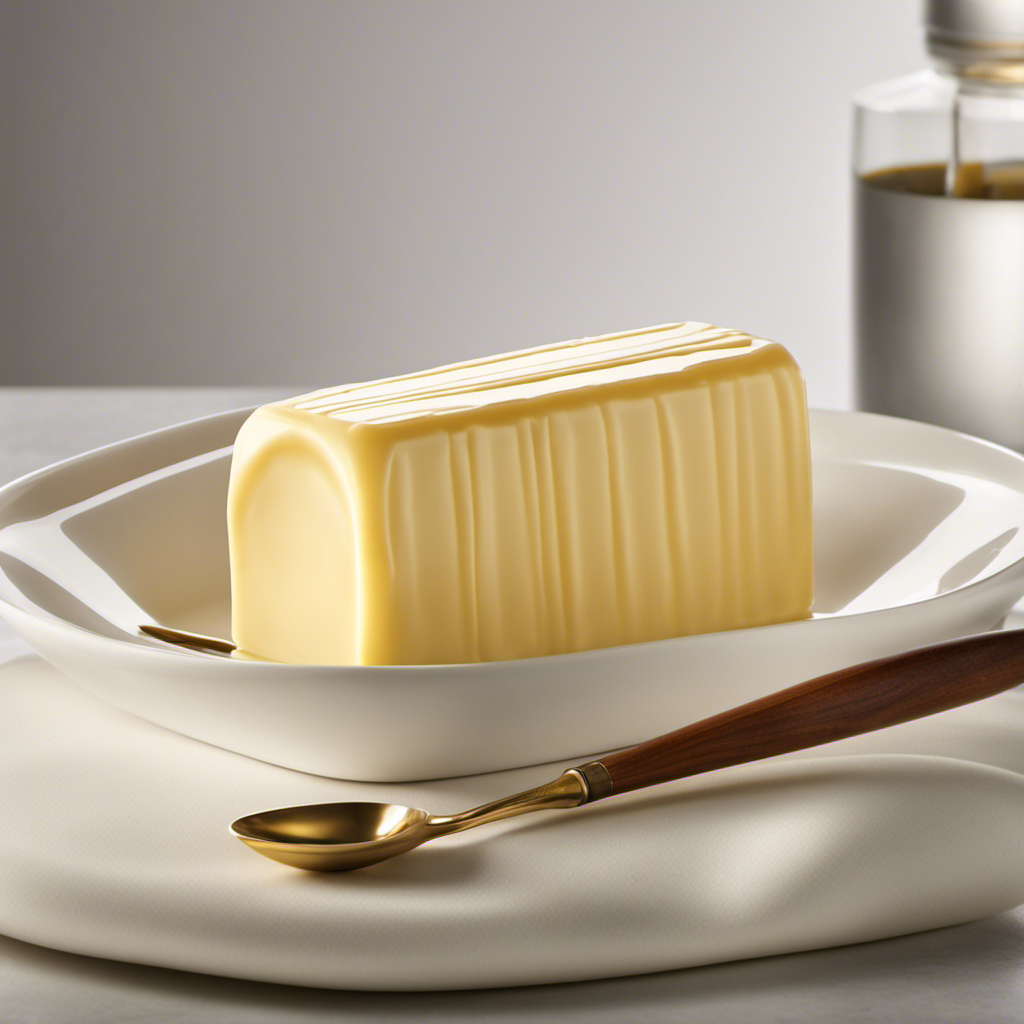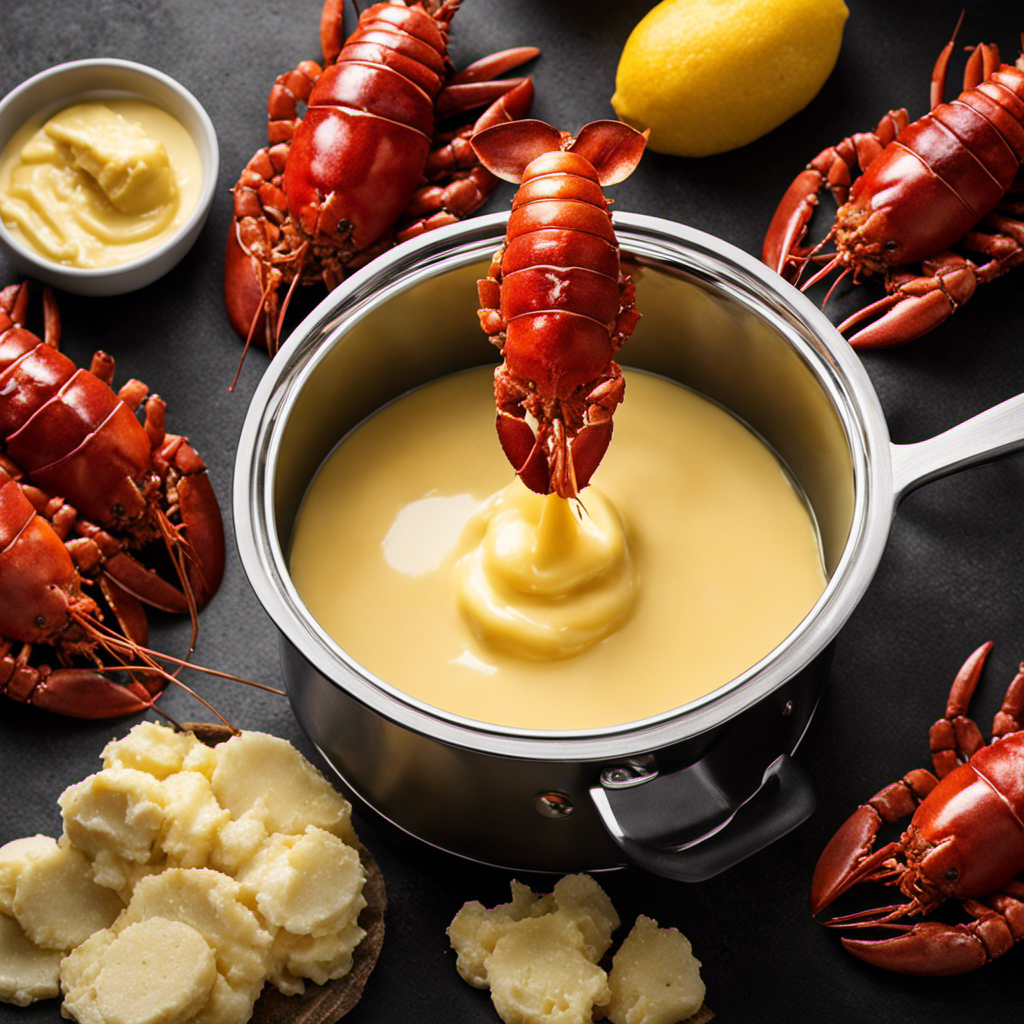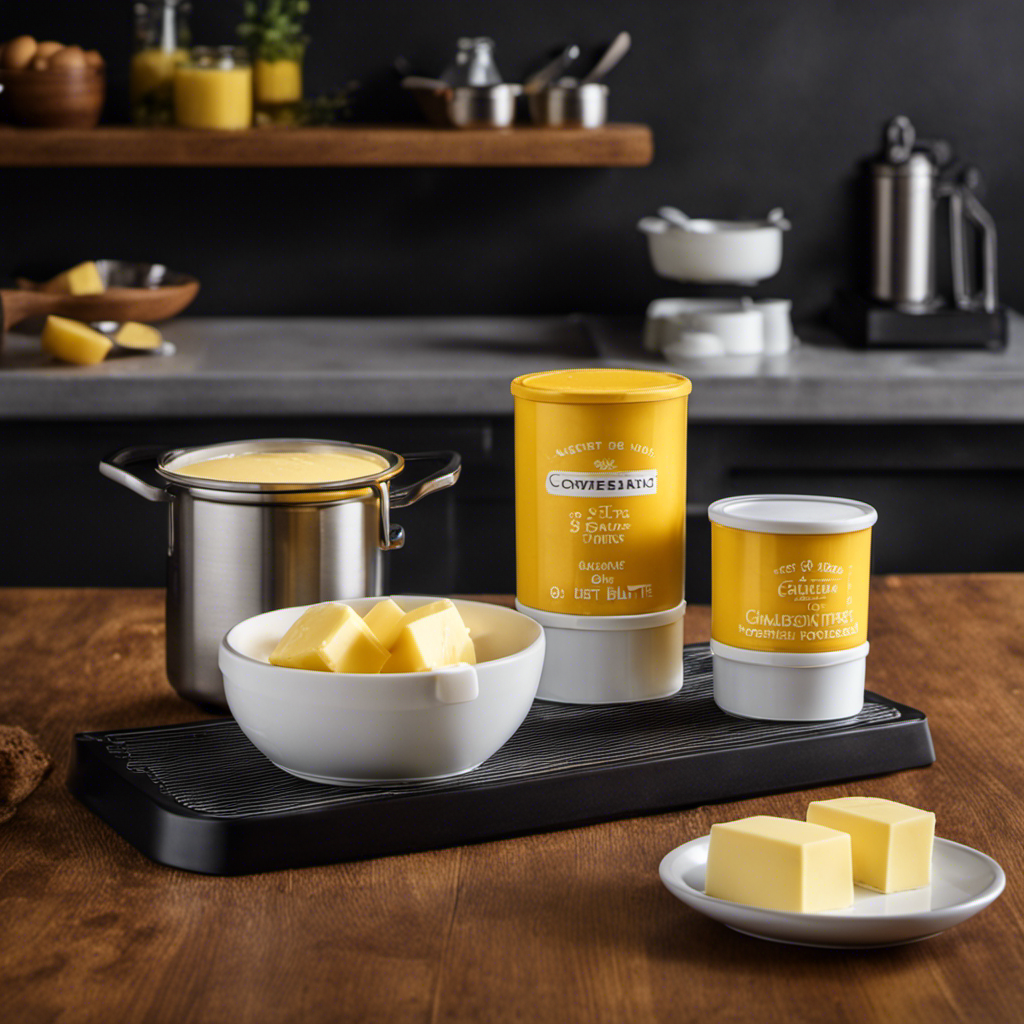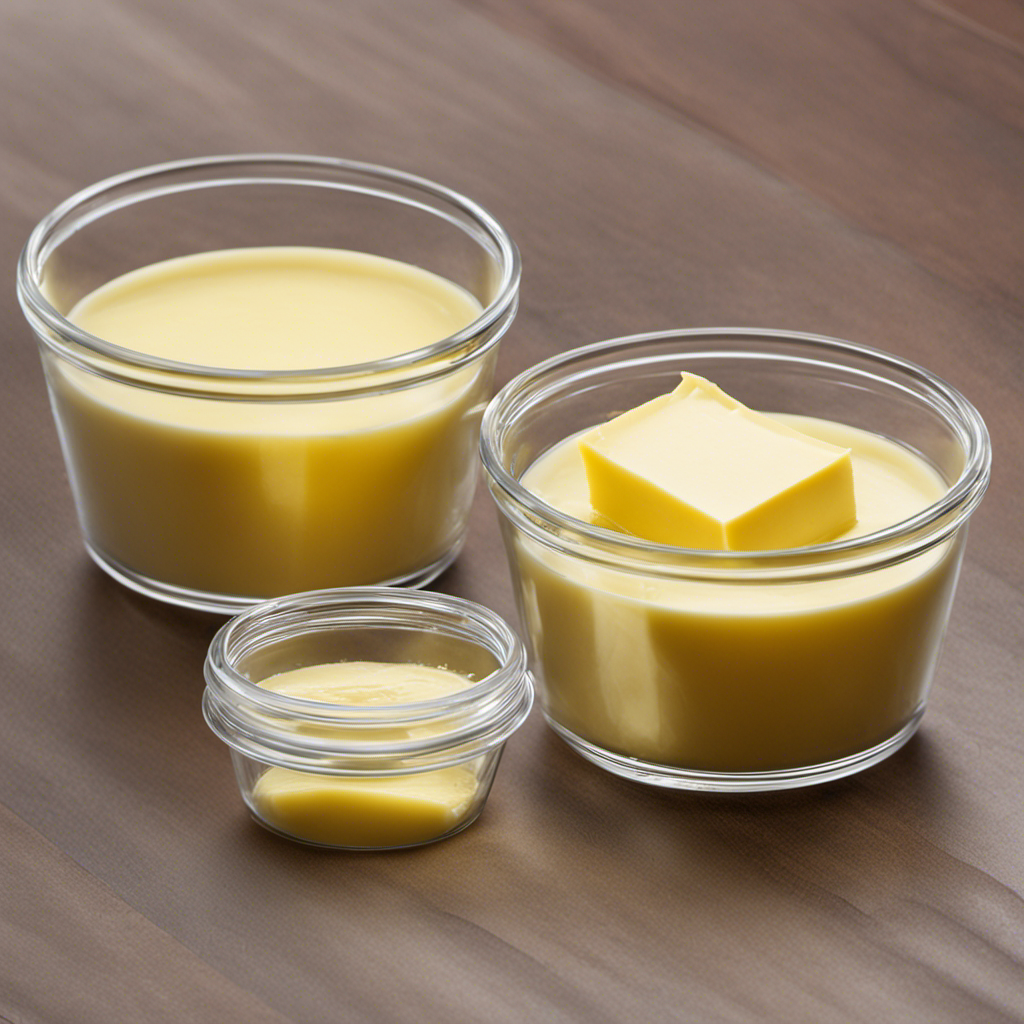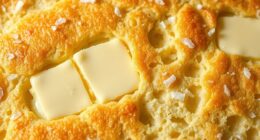Alright everyone, let’s explore the rich and creamy realm of homemade cashew butter! If you love spreads and are searching for a healthier option, this article is perfect for you.
I’ll guide you through the simple steps of transforming those humble cashews into a velvety, nutty delight. So, grab your blender and get ready to spread some deliciousness on your next slice of toast.
Trust me, once you taste this homemade goodness, store-bought won’t stand a chance. Let’s get cracking!
Key Takeaways
- Soaking cashews is a crucial step in making cashew butter.
- Soaking helps to soften cashews and enhance their creaminess.
- Soaking improves the texture, flavor, and digestibility of cashews.
- Blending techniques and flavor additions can further enhance the quality of cashew butter.
Gathering the Ingredients
To make cashew butter, you’ll need to gather all the necessary ingredients. Cashew butter is a delicious and nutritious spread that can be used in a variety of ways.
Before we get started, it’s important to note that soaking the cashews is a crucial step in the process. Soaking helps to soften the cashews and makes them easier to blend into a smooth and creamy butter. You can use different soaking techniques, such as overnight soaking or a quick soak method.
Additionally, you have the option to experiment with different nut butter variations by adding ingredients like honey, cinnamon, or cocoa powder.
Now that we have gathered our ingredients, let’s move on to the next step of soaking the cashews.
Soaking the Cashews
Soaking cashews is an important step in making cashew butter as it helps to soften the nuts and enhance their creaminess. The recommended soaking time for cashews is usually around 4-8 hours, although some sources suggest soaking them overnight for maximum results.
Soaking cashews not only improves their texture but also increases their digestibility and nutrient availability, making them easier to blend and more beneficial for our bodies.
Importance of Soaking
Soaked cashews are essential for making creamy cashew butter. When cashews are soaked, they become softer and easier to blend into a smooth and creamy texture. Here are four reasons why soaking cashews is important for making delicious cashew butter:
-
Improved texture: Soaking cashews helps to soften them, making them easier to blend into a creamy consistency. This results in a smoother and more spreadable cashew butter.
-
Enhanced flavor: Soaking cashews allows them to absorb water, which can help to mellow out any bitter or astringent flavors. This leads to a more balanced and enjoyable taste in the finished cashew butter.
-
Increased digestibility: Soaking cashews can help to break down phytic acid, which is a natural compound that can inhibit nutrient absorption. This makes the nutrients in cashews more bioavailable and easier to digest.
-
Versatility: Soaked cashews can also be used to make alternative nut butters, such as almond butter or hazelnut butter. Soaking techniques can be applied to various nuts, expanding the possibilities for homemade nut butter creations.
Overall, soaking cashews is a crucial step in making velvety cashew butter and unlocks a world of flavor and nutrition.
Soaking Time Recommendations
For best results, it’s recommended to let the cashews soak for at least four hours before blending them into a creamy consistency. Soaking the cashews helps soften them, making them easier to blend and resulting in a smoother butter.
This duration allows the cashews to absorb enough water, which helps break down the enzymes and phytic acid present in the nuts. However, if you’re short on time, you can use alternative soaking methods.
One method is to soak the cashews in hot water for 30 minutes. This speeds up the softening process, but keep in mind that the flavor and texture may differ slightly.
Another option is to soak the cashews overnight. This extended soaking time will result in an even creamier butter.
Experiment with different soaking durations to find the consistency that suits your preference.
Benefits of Soaked Cashews
To get the most out of your cashews, it’s beneficial to let them absorb water and soften before blending. When cashews are soaked, they become easier to blend into a creamy butter. But the benefits of soaked cashews go beyond just texture. Here are four reasons why soaking your cashews is worth it:
-
Improved digestion: Soaking cashews helps break down phytic acid, which can interfere with nutrient absorption. This makes them easier to digest and allows your body to access their nutritional benefits more effectively.
-
Enhanced nutrient availability: Soaking cashews can increase the bioavailability of nutrients like vitamins, minerals, and antioxidants. This means that your body can better absorb and utilize these beneficial compounds.
-
Reduced phytates: Phytates are natural compounds found in cashews that can bind to minerals and inhibit their absorption. Soaking cashews can help reduce the levels of phytates, ensuring that you get the most out of the minerals present in these nuts.
-
Creamier texture: Soaked cashews blend into a smoother, creamier texture, making them ideal for recipes that require a velvety consistency. Whether you’re making cashew butter, sauces, or desserts, soaking the cashews beforehand will result in a more luxurious end product.
Draining and Drying the Cashews
When making cashew butter, it’s crucial to properly drain and dry the soaked cashews before blending them. This ensures that the cashews are not too moist, which can affect the texture and consistency of the butter.
Optimal drying techniques, such as air drying or using a dehydrator, help remove excess moisture and enhance the flavor and shelf life of the cashew butter.
Optimal Drying Techniques
Properly drying the cashews is crucial for achieving the best texture in your cashew butter. To ensure optimal drying, follow these techniques:
-
Set the oven to a low temperature: Preheat your oven to 150°F (65°C). This gentle heat will gradually remove the moisture from the cashews without overheating them.
-
Spread cashews evenly on a baking sheet: Arrange the cashews in a single layer on a baking sheet. This allows for even air circulation and promotes uniform drying.
-
Monitor the drying time: The drying time can vary depending on the size and moisture content of the cashews. Typically, it takes around 2-4 hours for cashews to dry thoroughly.
-
Check for dryness: To check if the cashews are properly dried, they should be crisp and slightly golden in color. They should break easily when pressed between your fingers.
Importance of Thorough Draining?
After drying the cashews, the next step in making cashew butter is thorough draining. This step is crucial for achieving the desired consistency of the cashew butter.
When cashews are drained properly, excess moisture is removed, allowing the nuts to blend into a smooth and creamy butter. To drain the cashews, I usually place them on a clean kitchen towel and gently pat them dry. This helps to remove any remaining moisture that could affect the texture of the final product.
Once the cashews are drained, they are ready for the next step: blending.
Blending the Cashews
To blend the cashews, you’ll want to add a small amount of oil to help them process smoothly. This step is crucial in achieving a creamy and spreadable cashew butter.
Here are some key tips for blending cashews effectively:
-
Choose the right blender: Opt for a high-powered blender that can handle the tough texture of cashews. A blender with a strong motor and sharp blades will ensure a smooth and consistent blend.
-
Soak the cashews: Soaking cashews overnight or for at least four hours softens them, making them easier to blend. This step also helps remove any bitterness.
-
Add oil gradually: Start by adding a tablespoon of oil, such as coconut or vegetable oil, to the cashews. This will assist in the blending process and enhance the creamy texture.
-
Blend in intervals: Blend the cashews in short bursts, pausing in between to scrape down the sides of the blender jar. This will ensure an even blend and prevent overheating.
By following these blending techniques, you’ll be on your way to achieving a velvety-smooth cashew butter.
Now, let’s move on to the next step of adding flavor and texture to your creation.
Adding Flavor and Texture
Now that you’ve blended the cashews, it’s time to enhance the flavor and texture of your creation.
When it comes to flavor options for cashew butter, the possibilities are endless. You can keep it simple by adding a pinch of salt for a savory taste or go for a sweeter option by mixing in some honey or maple syrup. For those who love a little kick, a dash of cinnamon or a sprinkle of cocoa powder can add a delicious twist.
If you’re feeling adventurous, try experimenting with different textures. You can achieve a chunkier consistency by adding chopped nuts or dried fruits. Alternatively, for a smoother texture, try incorporating a splash of coconut oil or almond milk.
Don’t be afraid to get creative and personalize your cashew butter to suit your taste preferences.
Storing and Using Cashew Butter
For optimal freshness, remember to store your homemade cashew butter in an airtight container in the refrigerator. This will help extend its shelf life and prevent it from going rancid.
Here are some tips on storing and using cashew butter:
-
Refrigerate: Cashew butter should always be stored in the refrigerator to maintain its quality and prevent spoilage. The cool temperature helps to preserve its flavor and texture.
-
Airtight container: Use a container that seals tightly to keep out moisture and air. This will prevent the cashew butter from becoming dry or developing a stale taste.
-
Shelf life: Cashew butter can typically be stored in the refrigerator for up to 2-3 months. However, it’s best to check for any signs of spoilage, such as an off smell or mold, before using it.
-
Recipes: Cashew butter is a versatile ingredient that can be used in a variety of recipes, from smoothies and dressings to baked goods and sauces. Experiment with different flavors and combinations to enhance your dishes.
Tips and Variations for Making Cashew Butter
When making cashew butter, it’s important to experiment with different ingredients and flavors to create unique variations. One of my favorite variations is adding a touch of cinnamon and honey to the cashews before blending them into a smooth butter. This adds a warm and sweet flavor that pairs perfectly with toast or pancakes.
Another delicious variation is adding a tablespoon of cocoa powder and a pinch of sea salt to create a rich and decadent chocolate cashew butter. This is perfect for spreading on fruit or as a dip for pretzels.
Cashew butter can also be used in savory dishes like stir-fries or sauces, adding a creamy and nutty taste. With so many possibilities, cashew butter is a versatile ingredient that can be enjoyed in both sweet and savory dishes.
Frequently Asked Questions
Are There Any Alternatives to Cashews That Can Be Used to Make Cashew Butter?
There are alternatives to cashews that can be used to make nut butter, such as almonds or peanuts. These nuts offer different flavors and nutritional benefits, making them a versatile choice for homemade nut butter.
How Long Does It Take for Cashews to Soak Before Making Cashew Butter?
Well, I gotta say, soaking cashews for cashew butter is no quick process. It takes a good 4-6 hours to get those babies nice and soft. But trust me, the creamy goodness is worth the wait!
Can I Use Salted Cashews to Make Cashew Butter?
Yes, you can use salted cashews to make cashew butter. However, keep in mind that the taste of the cashew butter will be different compared to using unsalted cashews.
Is It Necessary to Roast the Cashews Before Blending Them?
Roasting vs. raw: which method is better for making cashew butter? Is it possible to make cashew butter without soaking the cashews? Roasting enhances flavor and texture, but raw preserves more nutrients. Soaking aids in blending.
Can I Add Other Nuts or Seeds to the Cashew Butter for Added Flavor?
Yes, you can definitely add other nuts or seeds to the cashew butter for added flavor. Some popular alternatives include almonds, peanuts, and sunflower seeds. It’s a great way to experiment and customize your cashew butter.
Conclusion
In conclusion, making cashew butter is a simple and delicious process that anyone can do. By following the steps outlined in this article, you can create a creamy and flavorful spread that will enhance your meals and snacks.
While some may argue that buying pre-made cashew butter is more convenient, the satisfaction and control you gain from making it yourself is worth the extra effort. Plus, homemade cashew butter allows you to experiment with different flavors and textures, making it a truly personalized experience.
So go ahead, give it a try and indulge in the richness of homemade cashew butter.
